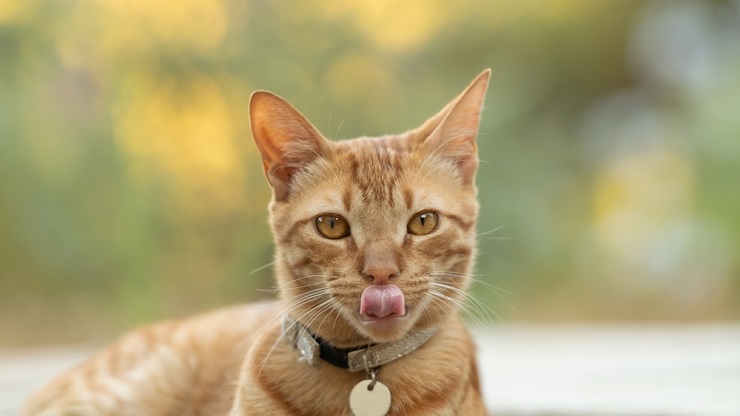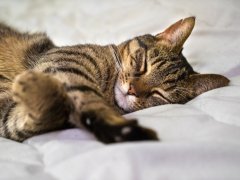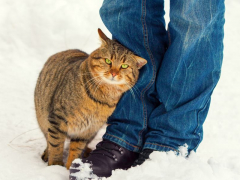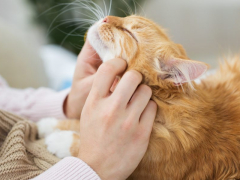
It is no secret that whiskers make your cat look super cute, but do you know why cats have whiskers? Did you know they serve many useful functions for your cat in their daily life? Without whiskers, your cat would struggle with simple tasks such as safely navigating their environment, which can lead to big problems.
This article will tell you all you need to know about cat whiskers and their importance in the life of every curious cat.
Whiskers are long, stiff hairs that are made of keratin, the same material as your cat’s fur. Whiskers assist cats with spacial awareness, balance, navigation, and communication. Never cut or pluck out your cat's whiskers, which can cause cats stress, confusion, and pain.Key Takeaways
What Are Whiskers?
Whiskers, or to use their scientific name, vibrissae, are long, stiff hairs that many mammals have in one form or another. The term “vibrissae” is derived from the Latin word “vibrare,” which means to vibrate.
Whiskers grow from hair follicles and are made of the same material as your cat’s fur, keratin (a type of protein). Whiskers differ from normal hairs in that they tend to be longer, more rigid, and of broader diameter, and normally stand out from the face.
Cats have whiskers in multiple places on their face; by the side of the nose, above the eyes, on the chin, and around the ears. Cats also have less well-known whiskers on their front limbs called “carpal” whiskers.
Each individual whisker has the vital function of relaying millions of pieces of sensory information to the brain, including vibrations, making them essential as special sensory organs. According to Guinness World Records, the longest feline whiskers recorded belonged to Missi, a Maine Coon cat from Finland whose whiskers measured 19 centimeters long.
Also Read: Understanding Your Cat’s Five Senses
Why Do Cats Have Whiskers?
Along with making your cat look cute, whiskers serve many essential functions, including:
1. Vibration Sensation
Your cat’s whiskers are so sensitive that they can pick up vibrations in the air, almost like your cat’s own radar system. This can be very helpful for a cat when they are hunting for prey and detecting impending dangers, too.
2. Spatial Awareness

Whiskers aid a cat’s exploration by helping them know if a space is too small for their body to fit through.
Whiskers can act like a built-in tape measure for cats, allowing them to assess whether their body will fit through an opening when they put their head through. This allows cats to avoid getting stuck when exploring their environment and helps to keep them out of harm’s way. Whiskers also enable cats to detect objects protecting them from danger or injury.
3. Balance
Whiskers play an essential role in your cat’s balance and determining the body’s position. Cats have special sensory cells called proprioceptors at the ends of their whiskers. Proprioceptors relay messages about the environment to the brain.
This then allows the brain to determine the position of the body relative to the space around it. Proprioceptors are present throughout the body, and without them, walking or even standing would be impossible, let alone always landing on your feet!
4. Night Vision Assistance
Though cats have much better night vision than we do, their whiskers also contribute to how well they can move around at night. Whiskers are so sensitive they can pick up changes in air currents, giving cats information on where objects are around them.This is one of the reasons it can be hard to tell if a cat is going blind because of the additional senses they have helping them navigate their environment.
5. Facial Protection

When the whiskers sense something close to the face, it alerts the cat to turn their head or close their eyes so they don’t get hurt.
The whiskers around your cat’s face are highly sensitive to even the lightest touch or piece of debris. This means your cat can quickly detect anything hazardous around their face and eyes. This allows them to move, shake, or blink quickly to remove whatever hazard they perceive.
6. Communication
The position your cat holds their whiskers can reveal their emotions. In fact, whisker position is one of the ways veterinarians assess cats for pain when they are hospitalized as part of a validated and comprehensive pain assessment which includes the “feline grimace score.” This scoring system looks at many subtle changes in the cat’s facial expression to ascertain how much pain they are feeling.
Scared cats might have rigid whiskers, whereas a relaxed cat often has relaxed whiskers. Cats are excellent at hiding their feelings, so their whiskers give us valuable insight into how they feel.
Also Read: 7 Common Cat Vocalizations And What They Mean
What Happens if I Pluck or Cut My Cat’s Whiskers?

Cutting or pulling out a cat’s whiskers can cause disorientation and stress.
The simple answer to this question is that you shouldn’t be removing your cat’s whiskers in the first place. Although the actual whisker doesn’t contain nerve endings, the base is rich in nerves and blood vessels. This means plucking whiskers will be extremely painful.
Cutting or plucking your cat’s whiskers will lead to them struggling with their spatial awareness and cause stress and confusion. If your cat roams outside, losing their whiskers puts them more at risk of getting trapped or stuck.
Why Is My Cat Losing Whiskers?
If your cat is losing many whiskers, consult your veterinarian to find out the cause.
Cats will lose whiskers intermittently as part of their normal hair-shedding process. So, if you find your cat is missing the odd whisker, then typically, this isn’t cause for concern. However, if you notice that many of your cat’s whiskers are falling out at the same time, or if your cat’s whisker loss is coinciding with hair loss elsewhere on the body, this may point to a medical issue.
This is especially true if you notice any redness, flaky skin, or oozing. There are several reasons your cat may be losing her whiskers, such as:
- Allergies
- Parasite infections (such as mange)
- Bacterial or fungal skin infections
- Feline acne
- Trauma or Physical damage
Unless your cat has a medical reason leading to hair loss, rest assured that the whiskers will more than likely grow back with time. Do not be surprised if the whiskers regrow a different color.
What Is Whisker Fatigue?
Whisker fatigue has been described anecdotally, but there is no scientific evidence base for this condition.
Whisker fatigue, or whisker stress, is a popular term used to describe the theory of overstimulation of the sensory processing of the whiskers. This reportedly happens when the whiskers are touched too much and is suggested to occur if your cat’s food or water bowls have high edges that contact this sensitive hair.
There is no scientific evidence base for this condition, which has only been described anecdotally. However, a recent study did find that cats preferred to eat from whisker-friendly bowls over their regular bowl.
Embrace Your Cat’s Whiskers
Whiskers are a vital part of a cat’s complex physical and behavioral well-being.
Not only are your cat’s whiskers adorable, but they also serve many vital roles in your cat’s day-to-day life. For this reason, your cat’s whiskers should never be trimmed or cut, however long they are. Instead, just enjoy these cute appendages and always treat them gently; your cat will thank you for it.
Frequently Asked Questions
What happens if you cut off a cat’s whiskers?
You should never cut your cat’s whiskers. Though the whisker itself doesn’t cause a cat to feel pain, they serve many essential functions for your cat in their daily life. By cutting them, you may be inadvertently putting your cat’s safety at risk.
Do cat whiskers grow back?
When whiskers fall out naturally, they will grow back, much like regular hairs do when they fall out. Whiskers that are broken or cut will need to wait for the natural hair cycle to occur to allow the whisker root to fall out and a new one to grow.
The natural cycle for whisker shedding and regrow is generally much slower than for regular hair, and as such, this regrowth process may take a long time. Never cut your cat’s whiskers. They are vital for many functions, and being without whiskers can cause many problems for your cat.
Do cats feel pain in their whiskers?
It is important to note that cutting your cat’s whiskers is never advisable as they serve many vital functions. Cats’ whiskers do not have nerve endings running through the shafts. This means that the actual hair does not feel pain when it is cut.
However, the hair root is rich in blood vessels and nerve endings, so plucking or pulling at whiskers is extremely painful. Handling the whiskers roughly can also cause discomfort.
Do cats let you touch their whiskers?
The answer to this question will depend greatly on each cat's personality. Some cats don't mind having their whiskers touched gently; others are highly offended by the very idea.
Even if your cat permits their whiskers to be touched, ensure you do this very gently. The whisker roots are richly innervated with lots of nerves, making them extremely sensitive. Rough handling will be painful for your cat.
-
Evangelista. M et al. (2019) Facial expressions of pain in cats: the development and validation of a Feline Grimace Score. Nature:Scientific Reports 9:19128 DOI https://doi.org/10.1038/s41598-019-55693-8 Retrieved 23rd August 2022
-
Guiness World Records (2022) Longest Cat Whiskers. Available at https://www.guinnessworldrecords.com/world-records/longest-cat-whiskers Retrieved 23rd August 2022
-
Slovak and Foster (2021) Evaluation of whisker stress in cats. Journal of Feline Medicine and Surgery. 23(4) DOI https://doi.org/10.1177/1098612X20930190 Retrieved 23rd August 2022







